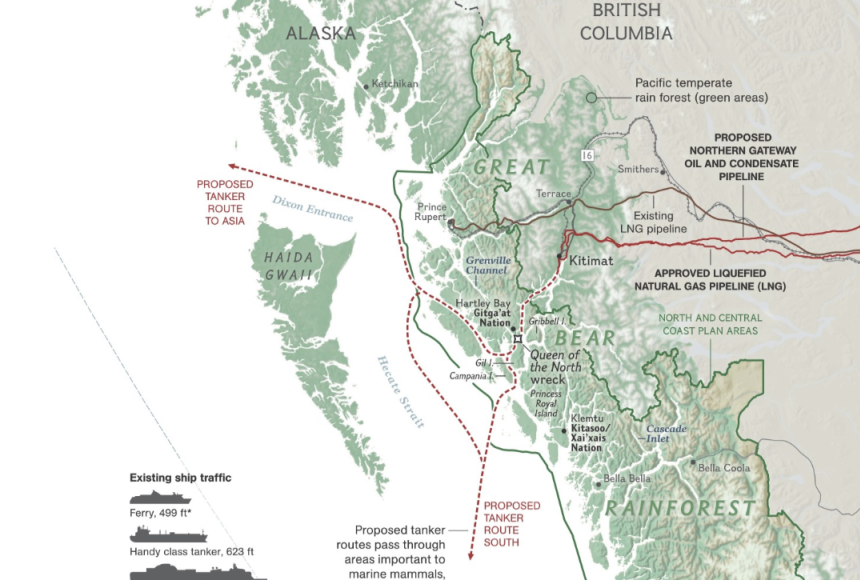MAP
MAP
The Canadian Pipeline
The Canadian Pipeline
Use this map to explore the significance of, and controversy surrounding, the Enbridge Northern Gateway Pipeline and oil tanker project. Students learn about the issues regarding the impact of the oil tankers on the environment and on Indigenous communities, the failure of Enbridge to consult with the First Nations, and the ultimate rejection of the pipeline.
Grades
5 - 8
Subjects
Conservation, Earth Science, Geology, Engineering, Geography, Social Studies
Image
Oil Tanker Routes
The proposed Enbridge Northern Gateway Pipeline would send oil tankers along ecologically sensitive routes in Canada's Great Bear Rainforest.
Infographic by National Geographic


Media Credits
The audio, illustrations, photos, and videos are credited beneath the media asset, except for promotional images, which generally link to another page that contains the media credit. The Rights Holder for media is the person or group credited.
Director
Author
Production Managers
Program Specialists
Producer
other
Last Updated
October 19, 2023
For information on user permissions, please read our Terms of Service. If you have questions about how to cite anything on our website in your project or classroom presentation, please contact your teacher. They will best know the preferred format. When you reach out to them, you will need the page title, URL, and the date you accessed the resource.
Media
If a media asset is downloadable, a download button appears in the corner of the media viewer. If no button appears, you cannot download or save the media.
Text
Text on this page is printable and can be used according to our Terms of Service.
Interactives
Any interactives on this page can only be played while you are visiting our website. You cannot download interactives.